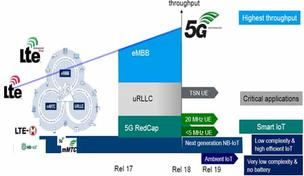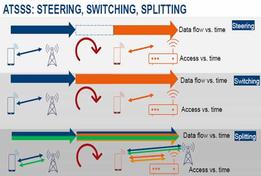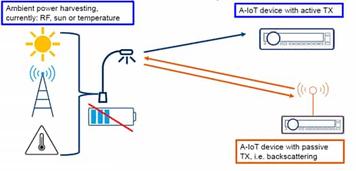5G NR RedCap vs LTE-M vs NB-IoT : Key differences
Advertisement
Introduction : In the ever evolving cellular IoT landscape, choosing between 5G NR RedCap (also known as NR-Light), LTE‑M (LTE Cat-M1) and NB‑IoT (Narrowband IoT) is a critical decision for designers of smart devices and networks. Let us compare them based on their capabilities across data rate, power consumption, coverage and device cost and derive differences between them.
NB-IoT (Narrowband-IoT)
-
It is a specialized 4G LTE technology engineered for the massive Internet of Things (mIoT), where vast numbers of simple, low cost devices need to send tiny amounts of data infrequently.
-
Its design prioritizes three key objectives above all else: extreme low power for multi year battery life, deep signal penetration to reach devices in challenging locations like basements or underground, and the lowest possible hardware cost.
-
Operating on a very narrow 200 kHz bandwidth, it offers very low data rates (typically under 100 kbps) and high latency, making it the ideal and highly efficient choice for stationary, “set and forget” applications like smart utility meters, agricultural sensors and building alarm systems.
LTE-M (LTE for Machines)
-
It is another 4G LTE based technology designed for a broad range of IoT applications, serving as a versatile middle ground between the extreme low power of NB-IoT and the high performance of traditional LTE.
-
It offers a more balanced profile, providing moderate data rates (around 1 Mbps), lower latency than NB-IoT, and crucial support for both device mobility and voice communications (VoLTE).
-
This combination of features makes it a flexible and efficient solution for use cases that require more capability than simple monitoring, such as asset trackers, fleet management systems, point of sale terminals and consumer wearables.
Understanding 5G NR RedCap (Reduced Capability)
-
It is a newer class of 5G technology specifically created to serve the “mid-tier” of advanced IoT, bridging the performance gap between legacy 4G IoT and high speed 5G mobile broadband.
-
It intentionally reduces the complexity of mainstream 5G by using less bandwidth, simpler antennas and lower power modes.
-
While slower than a 5G smartphone, RedCap delivers substantially higher data rates (10 to 100 Mbps) and lower latency than any 4G IoT technology, making it the ideal forward looking solution for more demanding applications like industrial wireless sensors, high quality video surveillance and advanced wearables that require a 5G native connection.
Major highlights of 5G NR RedCap:
- Reduced bandwidth (20 MHz in Rel.17, and 5 MHz in Rel.18)
- Simple antenna design : Typically 1 or 2 receive antennas and 1 transmit antenna
- Lower transmit power and half duplex communication
- Optimized for lower mobility devices like security camera, wearable etc.
Difference between NB-IoT, LTE-M and 5G RedCap
| Feature | NB-IoT (Narrowband-IoT) | LTE-M (LTE for Machines) | 5G RedCap (Reduced Capability) |
|---|---|---|---|
| Technology Generation | 4G LTE | 4G LTE | 5G NR (Standalone) |
| Primary Goal | Extreme low power, deep coverage, for massive numbers of simple devices. | Balanced power and performance, with mobility and voice support. | ”Just right” 5G performance for advanced IoT at a lower cost. |
| Peak Data Rate | Very Low (~60-100) | Low (~1 Mbps) | Moderate (10-100 Mbps) |
| Latency | High (seconds) | Moderate (tens to hundreds of milliseconds) | Low (closer to 5G speeds, tens of milliseconds) |
| Bandwidth | Very Narrow (200 kHz) | Narrow (1.4 MHz) | Moderate (5 MHz to 20 MHz) |
| Complexity & Cost | Lowest cost and complexity. | Low cost, more complex than NB-IoT. | Lower cost than 5G eMBB, but more complex and costly than LTE-M. |
| Mobility Support | Optimized for stationary devices. | Full mobility support (same as LTE). | Optimized for low mobility or stationary devices. |
Summary: NB-IoT is optimised for ultra low data, long battery life, deep indoor or remote coverage applications; LTE-M offers a balance of moderate data rates, mobility and cost for broader IoT use cases; and 5G NR RedCap fills the gap between LPWA and full 5G NR by delivering higher speeds and lower latency than NB-IoT/LTE-M, while still keeping device complexity and cost lower than consumer grade 5G.
Advertisement
 RF
RF





